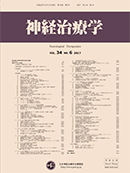Volume 33, Issue 6
Displaying 1-18 of 18 articles from this issue
- |<
- <
- 1
- >
- >|
-
2016Volume 33Issue 6 Pages 617
Published: 2016
Released on J-STAGE: April 30, 2017
Download PDF (222K)
-
2017Volume 33Issue 6 Pages 619-620
Published: 2017
Released on J-STAGE: April 30, 2017
Download PDF (333K)
-
2017Volume 33Issue 6 Pages 621
Published: 2017
Released on J-STAGE: April 30, 2017
Download PDF (200K) -
2017Volume 33Issue 6 Pages 622-626
Published: 2017
Released on J-STAGE: April 30, 2017
Download PDF (2119K) -
2017Volume 33Issue 6 Pages 627-632
Published: 2017
Released on J-STAGE: April 30, 2017
Download PDF (408K) -
2017Volume 33Issue 6 Pages 633-637
Published: 2017
Released on J-STAGE: April 30, 2017
Download PDF (1126K)
-
2017Volume 33Issue 6 Pages 638-641
Published: 2017
Released on J-STAGE: April 30, 2017
Download PDF (913K) -
2017Volume 33Issue 6 Pages 642-645
Published: 2017
Released on J-STAGE: April 30, 2017
Download PDF (447K) -
2017Volume 33Issue 6 Pages 646-651
Published: 2017
Released on J-STAGE: April 30, 2017
Download PDF (1276K)
-
2017Volume 33Issue 6 Pages 653-688
Published: 2017
Released on J-STAGE: April 30, 2017
Download PDF (7916K)
-
2017Volume 33Issue 6 Pages 689-690
Published: 2017
Released on J-STAGE: April 30, 2017
Download PDF (514K) -
2017Volume 33Issue 6 Pages 691-692
Published: 2017
Released on J-STAGE: April 30, 2017
Download PDF (762K) -
2017Volume 33Issue 6 Pages 693-696
Published: 2017
Released on J-STAGE: April 30, 2017
Download PDF (340K)
-
2016Volume 33Issue 6 Pages 697-701
Published: 2016
Released on J-STAGE: April 30, 2017
Download PDF (320K) -
2016Volume 33Issue 6 Pages 702-703
Published: 2016
Released on J-STAGE: April 30, 2017
Download PDF (284K) -
2016Volume 33Issue 6 Pages 704-707
Published: 2016
Released on J-STAGE: April 30, 2017
Download PDF (358K) -
2016Volume 33Issue 6 Pages 709
Published: 2016
Released on J-STAGE: April 30, 2017
Download PDF (206K) -
2016Volume 33Issue 6 Pages 710
Published: 2016
Released on J-STAGE: April 30, 2017
Download PDF (206K)
- |<
- <
- 1
- >
- >|
